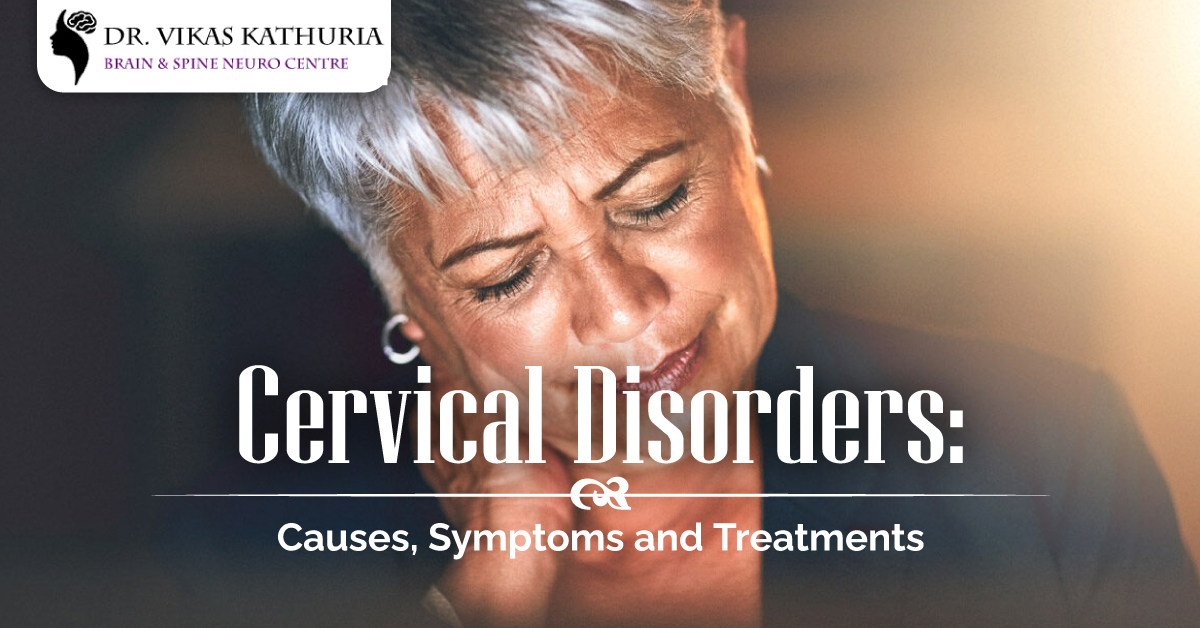Cervical Disorders: Causes, Symptoms, and Treatments

Cervical disorder, called spasmodic torticollis, causes your head to twist or turn to one side. Cervical disorder can cause head tilting. Cervical disorder is an uncommon condition that affects middle-aged women more than males. Symptoms begin gradually and eventually plateau. Cervical cell alterations can be caused by several factors, including infection (such as HPV) and hormonal shifts that occur naturally during life, such as during pregnancy or menopause. Cervical alterations typically progress slowly enough to be discovered by a Pap smear. If your test returns with abnormal results, it signifies that some of the cells in your cervix have taken on an unusual shape.
Cervical spine surgery in Gurgaon is well known to all. There are many spines surgeon in Gurgaon. If a screening reveals alterations in your cervix, it does not necessarily signify that you have cervical cancer; there are many other possible explanations. Your doctor may suggest further tests or therapy determine the root of the problem. Disorders of the cervical spine affect the bones (vertebrae) of the neck and the joints, muscles, and ligaments that connect the vertebrae. Damage to or deterioration of spinal structures brought on by “wear and tear,” stress, smoking, or aging are to blame.
Causes:
-
Sexually transmitted infections:
Sexual contact is the most common means of spreading the germs and viruses that cause Cervicitis. Common STIs like gonorrhea, chlamydia, trichomoniasis, and genital herpes can all lead to cervical inflammation and infection (Cervicitis).
-
Allergic responses:
An allergy can bring Cervicitis to contraceptive spermicides or the latex in condoms. Cervicitis can also be caused by a reaction to feminine hygiene products like douches or feminine deodorants.
-
Contamination by an excessive number of bacteria:
Cervicitis is caused by an excess of germs ordinarily found in the vagina (bacterial vaginosis).
Affecting symptoms:
Routine screenings are crucial as precancerous changes to the cervix are often asymptomatic. This is an essential measure in the fight against cervical cancer. Vaginal discharge, bleeding between periods or after intercourse, and pain during sex are common indications of malignant and noncancerous cervix abnormalities. More extended, heavier periods and intense menstrual cramps might be symptoms of endometriosis or adenomyosis. Urination may be impaired due to large cervical fibroids in highly unusual circumstances. If you’re experiencing any of these signs, it’s essential to be checked out by a doctor.
In-depth testing and diagnosis:
Your health care practitioner will perform a pelvic exam and a Pap smear to diagnose cervical alterations. To perform a Pap test, a gynecologist will collect a sample of cells from the cervix for microscopic analysis. The Pap test is used to detect malignant or precancerous cells early so they can be treated effectively.
Suppose a Pap smear or HPV test comes back positive. In that case, it may be time for additional testing to determine whether or not the cervix is affected by cancer, precancer, infection, or benign development. Colposcopy (in which lighted magnifying equipment is used to view the cervix and some cells may be taken), cone biopsy (in which a cone-shaped piece of tissue is removed from the cervix), and scraping the cervical cells are all possible diagnostic procedures.
Treatment:
Treating benign cervical alterations is usually unnecessary unless the symptoms severely interfere with everyday living. When a person is younger, their cervical cells have a better chance of reverting to normal. 
- A medical professional can remove cervical polyps. Cervical polyps smaller than 5 mm should not be investigated further, whereas larger polyps should be removed to check for cancer.
- Electrocautery, microwave tissue coagulation, laser therapy, and cryotherapy are only some options for dealing with cervical ectropion (using heat to kill the abnormal cells).
- Antibiotics and antiviral drugs may be used in the treatment of Cervicitis. However, this will depend on the underlying cause of the infection.
Possible dangers:
Age:
The disorder can happen to people of any age, but most people don’t get it until they are 30 or older.
Your sex:
Cervical dystonia is more likely to happen to women than it is to happen to men.
Family tree:
If someone in your family has cervical dystonia or another type of dystonia, you are more likely to get it too.
Complications
- To prevent harmful microorganisms from entering the uterus, your cervix is a physical barrier. A greater possibility of transmission to the uterus if your cervix is infected.
- Untreated gonorrheal or chlamydial Cervicitis can extend to the uterine lining and fallopian tubes, causing pelvic inflammatory disease (PID) and infertility.
- Having Cervicitis also raises your chances of contracting HIV from a sexually active partner who is infected.
Cervical abnormalities can take many forms, and while they may be concerning, they are usually harmless. You must consult the Best Neurosurgeon in Gurgaon if you experience pain or bleeding in the genital area after having sex that doesn’t seem to fit the norm. And remember to have Pap tests regularly to safeguard your cervical health, identify any cellular changes, and get them treated before they progress to cancer.
